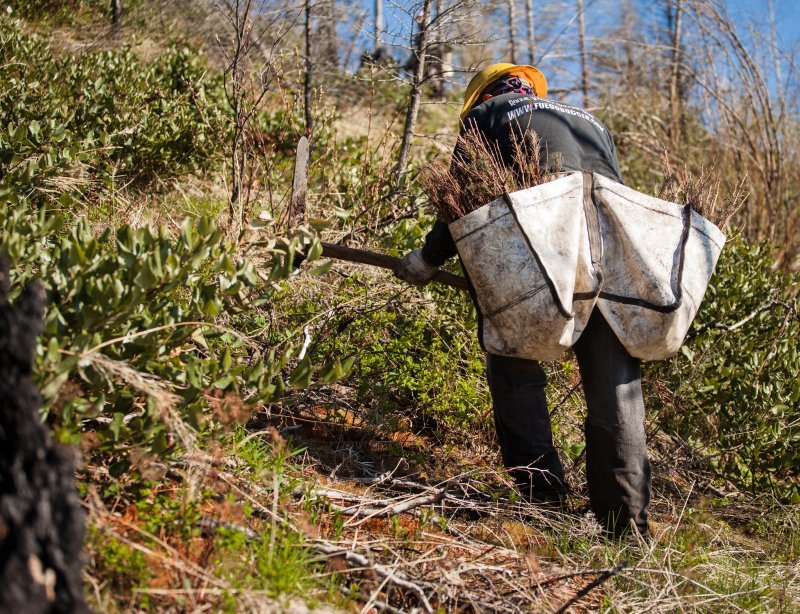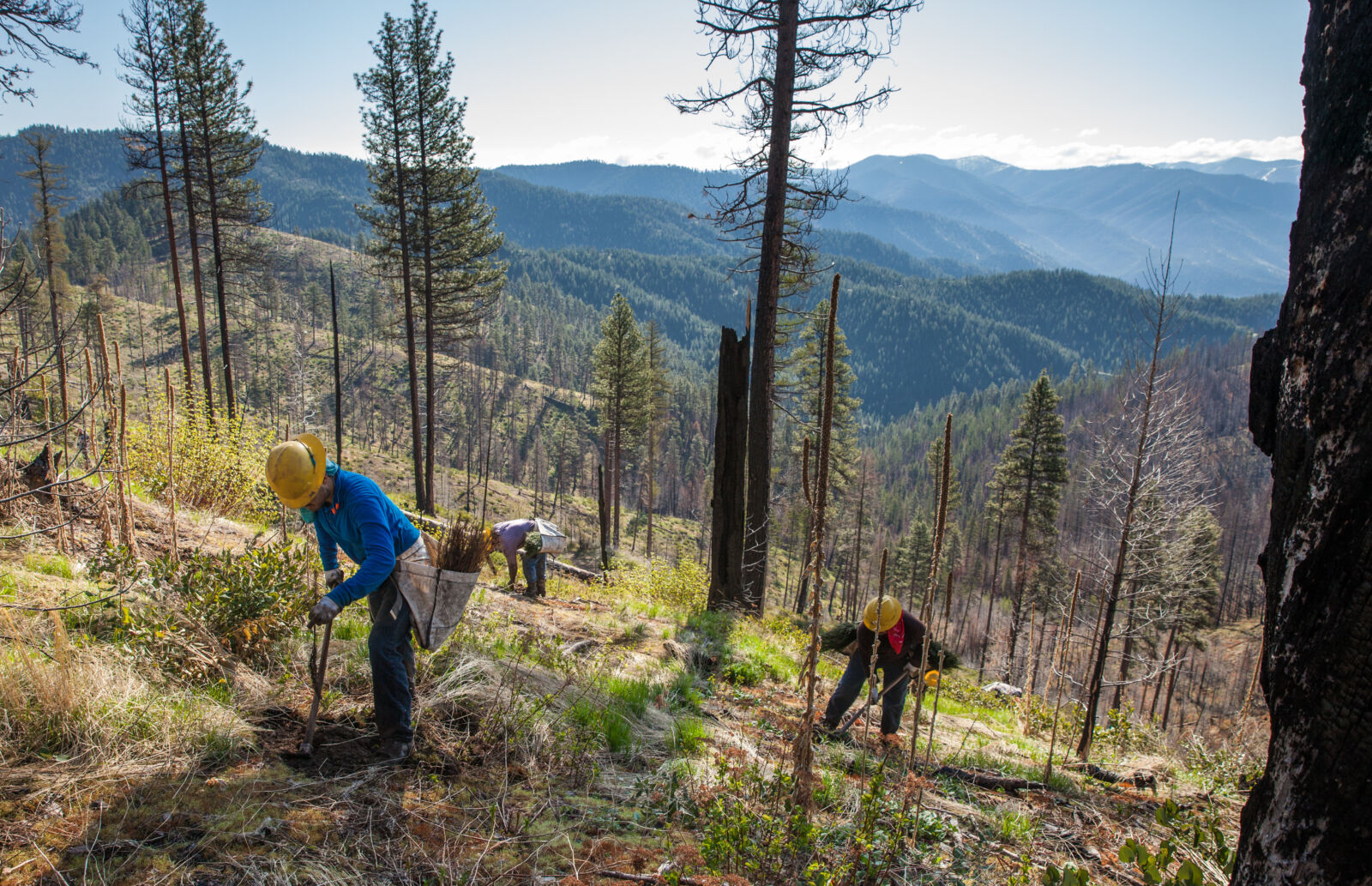One of the pleasures of working with a reforestation program on National Forests is occasionally experiencing reforestation in action. As part of the NFF’s reforestation team, I participated in my first tree planting project in 2018 and saw the impact of our work contributing to our large, but much needed, planting goal.
Like many western communities that are near National Forests, Missoula is familiar with wildfire. The summer of 2015 was a particularly severe fire year. To the west of Missoula, the West Fork Fish Creek Fire burned for more than a month. When I saw that West Fork Fish Creek was chosen for reforestation by the USDA Forest Service, I jumped at the chance to join foresters and their tree planting crew on-site for a day of planting.

Photo: Dave Gardner
To catch the planters early in the day, we left Missoula before dawn. Driving in the early morning light to the end of a single-lane, sinuous mountain road, we arrived at the burn scar of the West Fork Fish Creek Fire. Seeing a wildfire-impacted forest, three years after the event, can remind you of the old game pick-up-sticks; but instead of brightly colored “sticks,” there are standing and fallen dead trees. Also, it’s not just one pick up sticks-slope, there are several.
By the time we arrived to the site, the tree planters and foresters were already busy preparing for the hard day ahead. Like any typical planting day, Forest Service staff and the planting crew began work at 7:00 am. Each planter carries a large canvas bag around their waist that’s filled with about a hundred seedlings, carefully packaged to prevent root damage, and a mattock-like planting tool called a hoedad. The planters move methodically across the steep and rugged slopes, scraping, digging, and reaching into the bag for a new seedling about once every 15 seconds. Once the bag of seedlings is finished, the planters hike back for a refill, and the planting cycle continues into the early afternoon.
Professional tree planters are highly efficient and skilled. Over the next few days, the crew of twelve planted 20,000 ponderosa pine and western larch seedlings across 76 acres of Lolo National Forest. That’s about 57.5 football fields in all, with each planter distributing about 1,700 seedlings on 4.5 fields.

Dave Gardner
Photo: Dave Gardner
Planting in National Forests is incredibly difficult work. First, the slope is very steep - even the most avid hiker would likely have trouble. Second, the hoedad is not an easy tool to use. It’s heavy and awkward, especially for someone more used to a shovel. And third, did I say it’s steep? All of this work is completed at a mind-bending speed. To say the least, professional tree planters are an impressive group of people.
While the professional planters are hard at work, Forest Service employees are monitoring operations to ensure the trees are planted correctly. All day, they move back and forth throughout the forest trailing the planters. They measure seedling density and inspect seedlings to ensure maximum survival.
Planting a seedling on West Fork Fish Creek project site, Lolo National Forest
Having seen a tree planting project for the first time, I’m excited to one day visit this area again and see the forest return. These seedlings will grow into healthy trees that enhance the health and resiliency of this forest, while sequestering carbon and improving habitat for some of Montana’s most iconic species - elk, moose, black bears, and mountain lions to name a few.
Our tree planting program raises funds to plant trees across National Forests in places like this, areas that have lost forest cover due to wildfires, insects and disease, and other natural disturbances. We are able to plant trees where they are needed most thanks to the generous support of our tree planting donors, corporate partners, and Sapling members.

